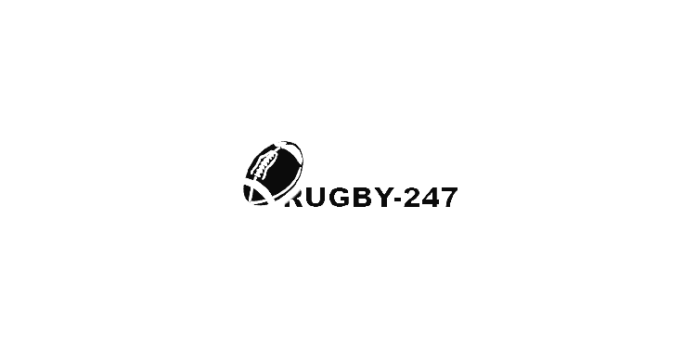
[ad_1]
Every professional player — from provincial to Super Rugby and the test scene — are closely watched in game by independent match day doctors who screen contact and collisions for suspected head injuries through the television director’s pitch side feed.
When a head knock is identified, these days with assistance from instrumented mouthguard alerts, the referee informs the affected player and they must leave the field to undergo the HIA test.
As soon as they depart, the 12-minute window to complete the test — 17 minutes if it is blood related — begins.
AdvertisementAdvertise with NZME.
At the elite level, some countries, such as France, insist their team doctor is present in the medical room for testing. Usually, though, the independent match day doctors perform the assessment with the player alone.
The neurological test is designed to challenge everything from balance to cognitive functions and memory. It is conducted through a specialised concussion management (SCRM) application, which standardises and logs assessments in World Rugby-approved competitions.
On this occasion, Rob Everitt, the most experienced match-day doctor, having overseen more than 300 professional games, performs my test.
“Most people doing their first one don’t pass it,” Everitt says, as if he’s viewed my high school grades.
Discover more
At the start of each season, all players undergo the HIA test to register a baseline that is then compared against results from their in-game score.
While the test has continually evolved in the past 13 years, a decade-long veteran would have experienced a version of it at least 10 times.
Coming in cold, taking the test for the first time, is not like-for-like compared to that familiarity, but it does provide a genuine insight as to exactly what’s involved.
Everitt begins with a set of 10 words — said to be scientifically selected — that can be recalled in any order.
“Jacket, arrow, pepper, cotton, movie, baby, monkey, perfume, sunset, iron,” he says.
I recall five words.
AdvertisementAdvertise with NZME.
Everitt repeats the same words twice more. I score five and six. Good start, then.
The next stage further probes memory.
“What venue are we at? Which half is it? Who scored last in this match? What team did you last play? Did you win your last game?”
Then come the numbers, starting with a sequence of three, which must be repeated in reverse order.
Sounds simple enough, right?
I complete the first number sequence… and then start to stumble.
AdvertisementAdvertise with NZME.
Everitt completes seven number sequences, increasing those by one each time I correctly recall all in reverse order.
Balance is next.
“Place your kicking foot in front with your heel to toe. Put your hands on your hips and close your eyes,” Everitt says, starting his timer.
Questions about potential symptoms follow.
“Do you have a headache, dizziness, pressure in your head? Are you nauseous or feel like vomiting? Do you have blurred vision? Does light or noise worry you? Do you feel as though you’re slowing down, in a fog or unwell?”
The final task is to recall as many of the 10 words used at the start in any order. I managed five, for a total of 18 of the 30 words, and duly fail the test.
AdvertisementAdvertise with NZME.
Most top-level players score in the mid to high 20s with the words, and eight or above on the number recall.
“It’s a remarkably challenging test and very well proven scientifically,” Everitt says. “They’ve done a lot of testing. It’s a complicated system. It’s testing cognition, balance. It’s looking at symptoms. It’s testing immediate memory, near memory and remote memory.
“Players eat the numbers up. It’s really impressive. They’re doing that while playing professional rugby, deep into the second half, sometimes they come in here with respiratory rates in the 40s, blowing big time, and they’ll still perform.”
Due to their familiarity and desperation to return to the pitch most players reach the last memory recall in under five minutes but are then held so it can be properly assessed.
“We are often sitting with a player for 40-50 seconds waiting for that five minutes to tick over. That’s all part of the scientific process, ”Everitt says. “It’s by far and away the best in sport, on the planet. World Rugby is clearly leading the way and a lot of other sports are looking at it.”
The HIA protocols don’t end there. Players must undergo a second post-match test and a third 36-48 hours after the incident to be cleared to play the following week.
AdvertisementAdvertise with NZME.
Should players fail those tests, they are placed into a mandatory 12-day stand down and must tick several boxes before returning to contact.
Concussion remains a pressing issue confronting all contact sports but the real-time mouthguard collision alerts and the ever-evolving HIA test have vastly advanced safety measures in recent years — in many ways saving players from themselves.
The HIA test will never provide perfect detection but, the first time at least, it is difficult to pass.
The other takeaway from this experience is maybe I’m not cut out for the pressures of the pro game, after all.
Liam Napier has been a sports journalist since 2010, and his work has taken him to World Cups in rugby, netball and cricket, boxing world title fights and Commonwealth Games.
[ad_2]
Copyright for syndicated content belongs to the linked Source link

